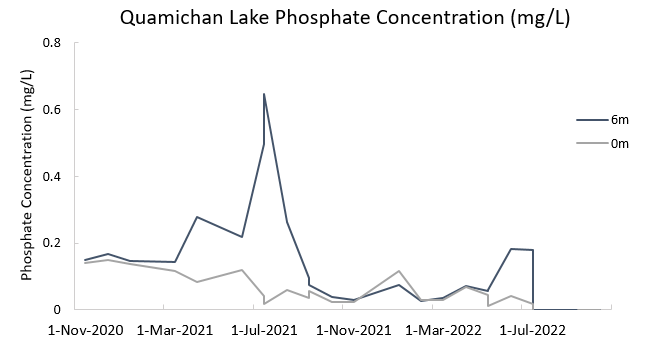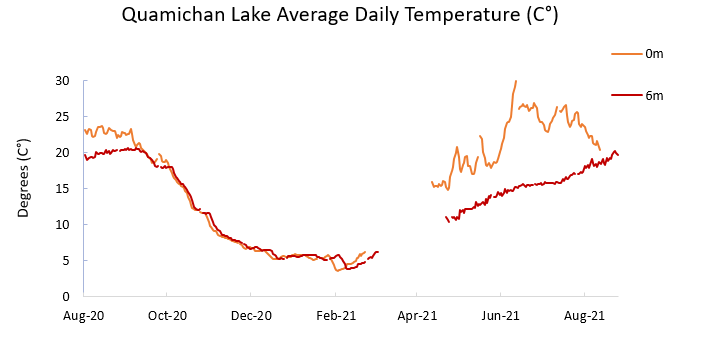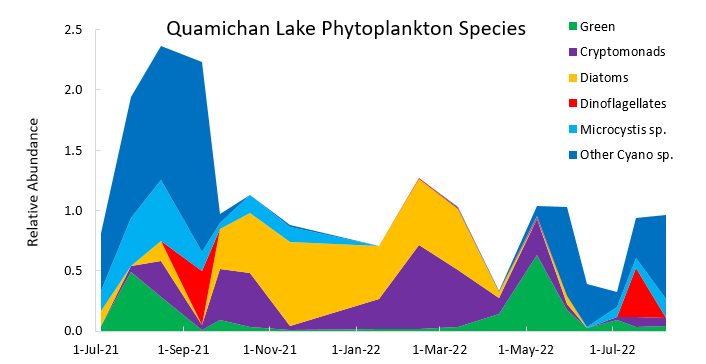Background
Quamichan Lake has been subject to undesirable blooms of cyanobacteria (blue-green algae) since around the 1930s. In the past two decades, the blooms have become longer and more intense. The root cause of these blooms is the high concentration of phosphorus in the lake, which is largely due to phosphorus that has been stored in the lake sediment after 150 years of runoff from forested, farmed and developed lands in the Quamichan watershed.
Key findings show that the primary cause of cyanobacteria is the phosphorus load that has already accumulated within the lake and that agricultural activity is currently a more significant source of phosphorus than residential development around the lake. Updated phosphorous, water temperature and cyanobacteria data for Lake Quamichan can be found below.

Note: The concentration of phosphorous is highest from July-August, this is associated with the higher water surface temperature and low dissolved oxygen at the bottom of the lake during the summer months.

Note: The water temperature of Quamichan Lake is the highest from July-August. This increase in temperature activate the phosphorus in the sediment which contributes to cyanobacteria blooms.

Note: The abundance of cyanobacteria (Microcystis sp.) was significantly lower during summer 2022 than the summer 2021. This can be attributed to the larger volume of precipitation that fell during the later spring experience 2022. This additional input of water helped to flush out excess phosphorous which is responsible for algae-blooms.
Findings from the water quality sampling program on Quamichan Lake were presented to Council in 2022 and they agreed to continue the monitoring program and to support further action toward improving the health of the lake. Including:
- Using data from sediment core sampling from the lake bottom to determine the internal versus external phosphorus loading and potential improvement measures
- Analyze hourly temperature and dissolved oxygen in the lake
- Monitoring bi-weekly in the summer and monthly in the winter for; pH, turbidity, conductivity, nutrients and phytoplankton species
- Undertaking a feasibility study for constructing wetland areas
Ongoing monitoring will ensure that an accurate baseline state is documented to accurately assess improvements over time. This will also help North Cowichan hone in on the most suitable management options in the future.
